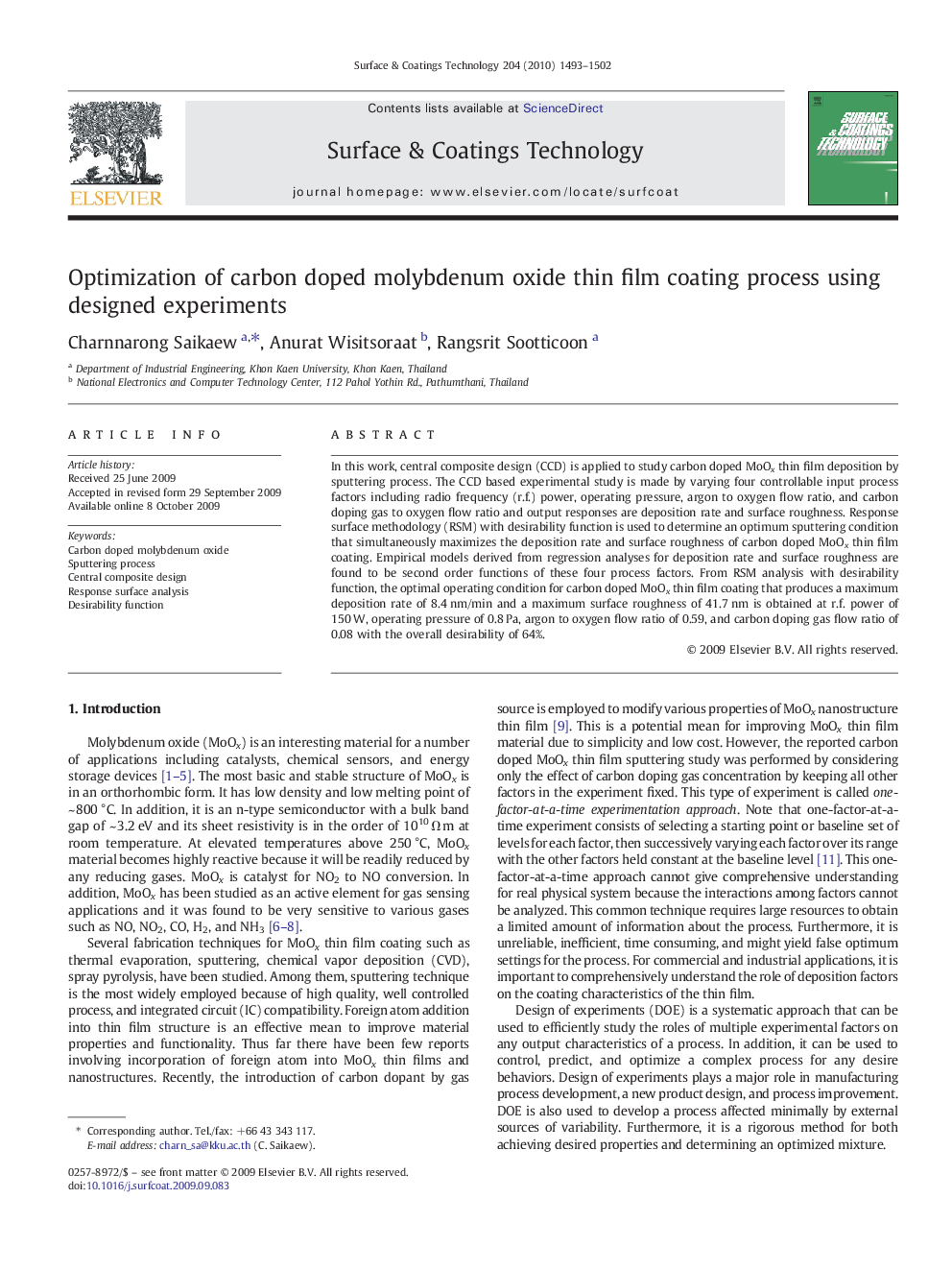| Article ID | Journal | Published Year | Pages | File Type |
|---|---|---|---|---|
| 1659747 | Surface and Coatings Technology | 2010 | 10 Pages |
In this work, central composite design (CCD) is applied to study carbon doped MoOx thin film deposition by sputtering process. The CCD based experimental study is made by varying four controllable input process factors including radio frequency (r.f.) power, operating pressure, argon to oxygen flow ratio, and carbon doping gas to oxygen flow ratio and output responses are deposition rate and surface roughness. Response surface methodology (RSM) with desirability function is used to determine an optimum sputtering condition that simultaneously maximizes the deposition rate and surface roughness of carbon doped MoOx thin film coating. Empirical models derived from regression analyses for deposition rate and surface roughness are found to be second order functions of these four process factors. From RSM analysis with desirability function, the optimal operating condition for carbon doped MoOx thin film coating that produces a maximum deposition rate of 8.4 nm/min and a maximum surface roughness of 41.7 nm is obtained at r.f. power of 150 W, operating pressure of 0.8 Pa, argon to oxygen flow ratio of 0.59, and carbon doping gas flow ratio of 0.08 with the overall desirability of 64%.
